Penn&Paper's Solutions™: Progress Tracker
Contents
A couple of weeks ago I began to develop a new component of the system we ship. In order to not get lost in where I currently am, I decided to employ a tool to visualize structure of the component, and to track progress of its development.
However, I was too busy to write a program on my own. Therefore, I decided to purchase an enterprise solution. I analyzed the market, and asked a couple of questions. And I found a product. The product. "Penn&Paper™'s Progress Tracker 8.3 Personal Edition by Penn&Paper™'s Solutions. The one that suited me, fulfilled all my requirements, and was very easy to use.
I was so satisfied with this product, that I even decided to publish an interview with one of "Penn&Paper™'s" sales managers in my extremely popular blog. To make it more interesting, I accompanied it with pictures about my experience with usage of their product.
Interview with a Penn&Paper's Solutions™ representative
So, here it is. Violet Page, a sales manager from "Penn&Paper™'s Solutions" presents their "Progress Tracker 8.3 Personal"!
Pavel Shved: Violet, first, I must confess that I'm a fan of your company nowadays. You seem to create very "natural" products for human beings to operate. So, I guess, that a description of how easy it is to work with would be a good thing to start.
Violet Page: Yeah, "Penn&Paper™'s Progress Tracker 8.3 Personal" is very easy to work with indeed! You start the application, and it automatically opens a sheet. Then you may just select a Pen tool
and draw a couple of lines. You can draw straight and freehand lines—whatever you wish, there's no limitations! This is all what it takes to draw a scheme of component distribution of your application.
P.S. Allright, we'd get a diagram of a component's architecture. But what about progress?
V.P. Oh, that's also easy. Just select a Marker tool,
and apply it to the parts of the system you've implemented
You can apply it to the interfaces and implementations, depending of what you've drawn with a pen tool in the first place. You're free to shade your items partially, and to use different colors.
This way you'll clearly see that the parts you've already implemented are shaded, and those you still haven't—are not.
As you gradually progress in developing the system, you'll shade more and more parts.
And more parts
Until, finally, you implement everything you've planned for the release.
P.S. You said I can draw freehand lines, but what if I just want to type some text?
V.P. That's easy to accomplish through the very same "Pen tool". Just user the context menu and select "type text" item. The text tool supports UTF-8, so you don't have to struggle to type symbols in your native language
P.S. What about teamwork? You know, you usually track progress not just to please yourself. Rather, one of your primary objectives is to provide a shiny picture for your managers and peers. How could I share results of my work with the other developers?
V.P. You have two options here. First, you can take a screenshot, and publish it the way you prefer.
You can post it to your corporate wiki, or mail to the parties interested. Or just make an animated GIF out of it:
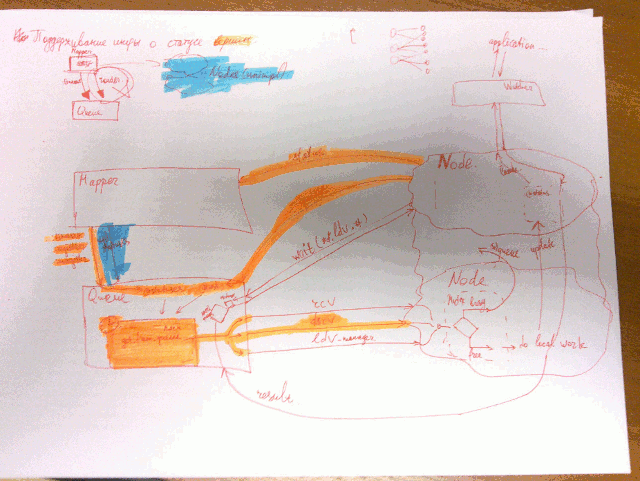
P.S. What's the other option?
V.P. Our "Progress Tracker" integrates smoothly with the other "Penn&Paper's Solutions™" products. For example, you may seamlessly re-play your progress when you're having a corporate video conference call with "Penn&Paper's Conference Table™", so that your peers could envision the roadmap of the discussion:
Check out how the developer covers more of the diagram with his Marker tool as he explains the architecture of his software:
The other useful way of integration for collaboration is posting your work onto a "Penn&Paper's Blackboard™" knowledge sharing tool:
P.S. Hey, wait a minute. Collaboration over the same sheet usually causes merge conflicts. What can you do about them? The format you employ is obviously binary, and automatic merges are impossible... aren't they?
V.P. Yes, it's impossible. We adopted a technique familiar to many developers. Your colleagues may just "check out" your sheet (like in older revision-control systems), discuss it, make amendments, and then put it back to your workplace. We think that it's the most natural workflow.
P.S. What about protection? Are my sheets foolproof?
V.P. Well, for any protection there's a person stupid enough to bypass it. However, we provide some protection functionality. The first is the notorious "Trash can", into which your sheets are placed if accidentally deleted.
You can recover them easily from the "Trash can" unless it's really stuffed, and your sheets are disengaged.
However, the Personal Edition doesn't support Undo functionality. For this feature to work, you have to purchase one of our corporate products, such as the aforementioned "Blackboard":
P.S. Alright, so we've observed all the major features. But what's the price?
V.P. We've adopted a pay-as-you-go licensing model, popular in business applications. For example, for 4.95 you may paint 15 miles of lines without restrictions to the number of components you draw, or any time limitations! Our competitors require much greater funding.
P.S. Indeed, I drew this whole system, and the 5$ license isn't even half-used. Mrs. Page, thank you for the interview, and good luck in your future affairs!
Conclusion
So, unless you're dumb, you have already understood that it all is entirely fictional. You know, a whole generation emerged, of people who only saw floppy disks on "save buttons". And here comes a generation that discovers the stuff that surrounds them in their offices by studying allegations in software products, with which they (we) are much more familiar.
Of course, I'll continue to use "Penn&Paper's™" products. In fact, we're currently using one of them, the "Penn&Paner's™ Blackboard" referenced above, which is extremely useful in our Scrum daily meetings. I also have made a quick overview of "Penn&Paner's™ Table Scroll Sanitizer®", an open-source alternative of which I developed. I'm looking forward to more interviews with Violet Page, and, actually, to a small discount on their products >__<.
Comments imported from the old website
Glass wall-boards is a neat idea. However, when it comes to implementation... Walls are usually uneasy to access, because a lot of stuff stands at them. At least in our office, capacity of which we seem to have exceeded.
Covering a desk with glass could work, but you'll have to be careful that the paint doesn't make things you put on it (or your sleeves) dirty.
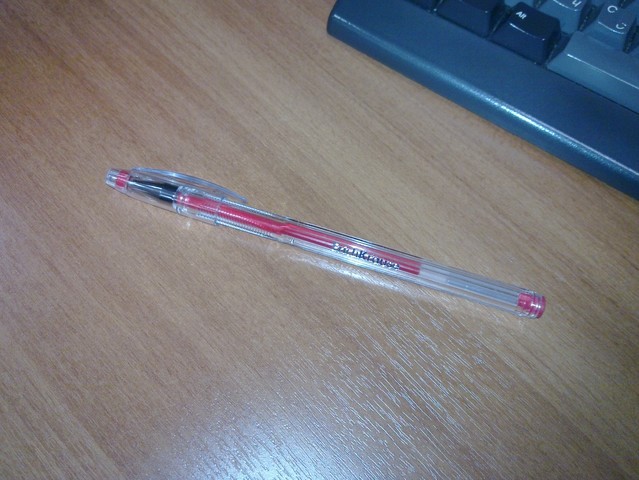
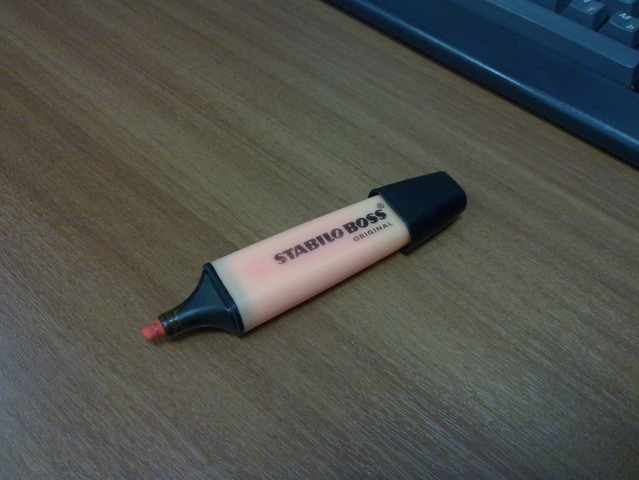

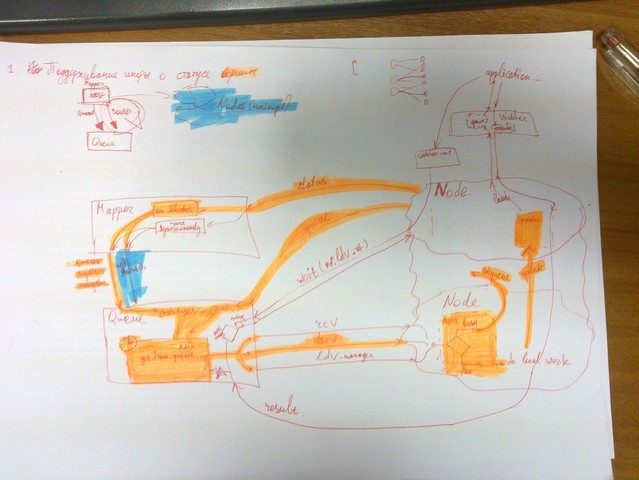
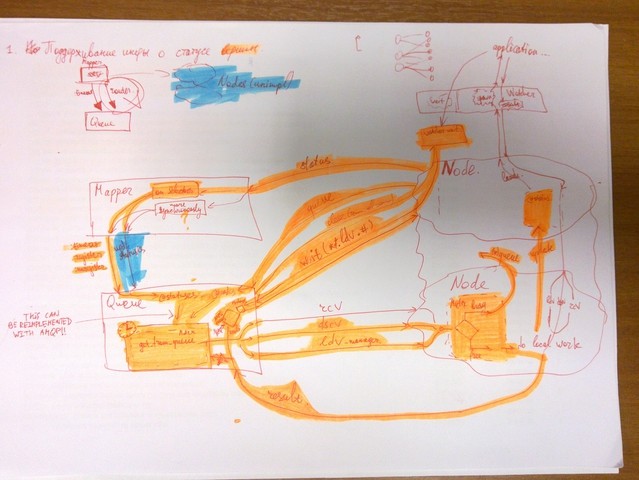


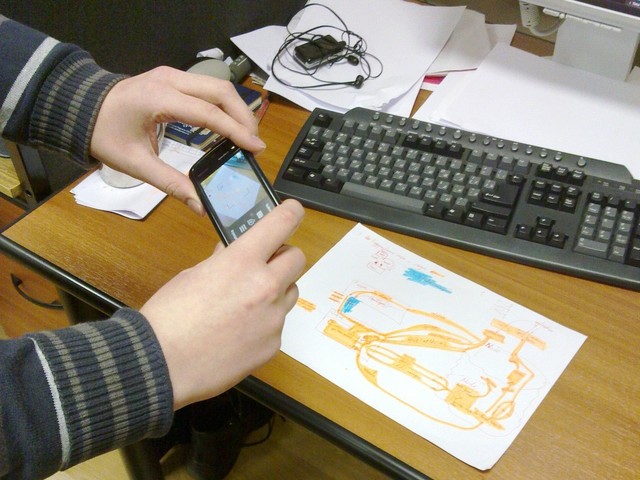
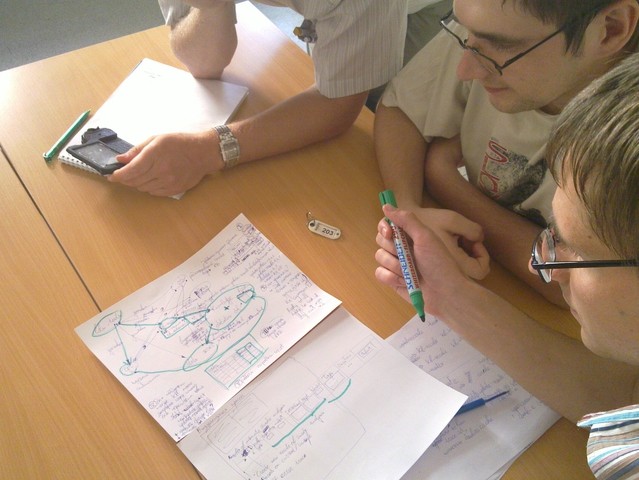


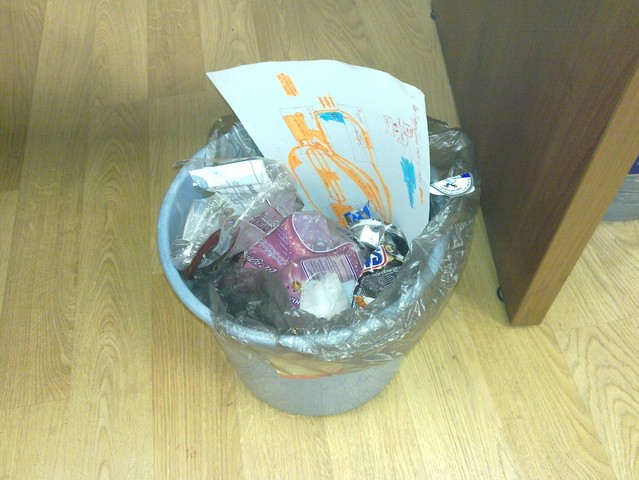

Yeah, I agree with you of course.
One interesting thing I recently learned about whiteboards, is you can make them from glass. So, if you wall your office in suitable wallpaper/fabric (whatever colour) and cover it with glass, you can then write on it with the appropriate pencil. Of course, this technique can also be expanded to desks and walls next to desks. Quite great, I think.
I, like you, tend to do almost all my project planning on paper, with relevant items (obviously, it goes without saying), making it into Trac as time goes on.
Anyway, I think we will see more of this - fighting against technological solutions - as time goes on. I, for one, think it is nice :)